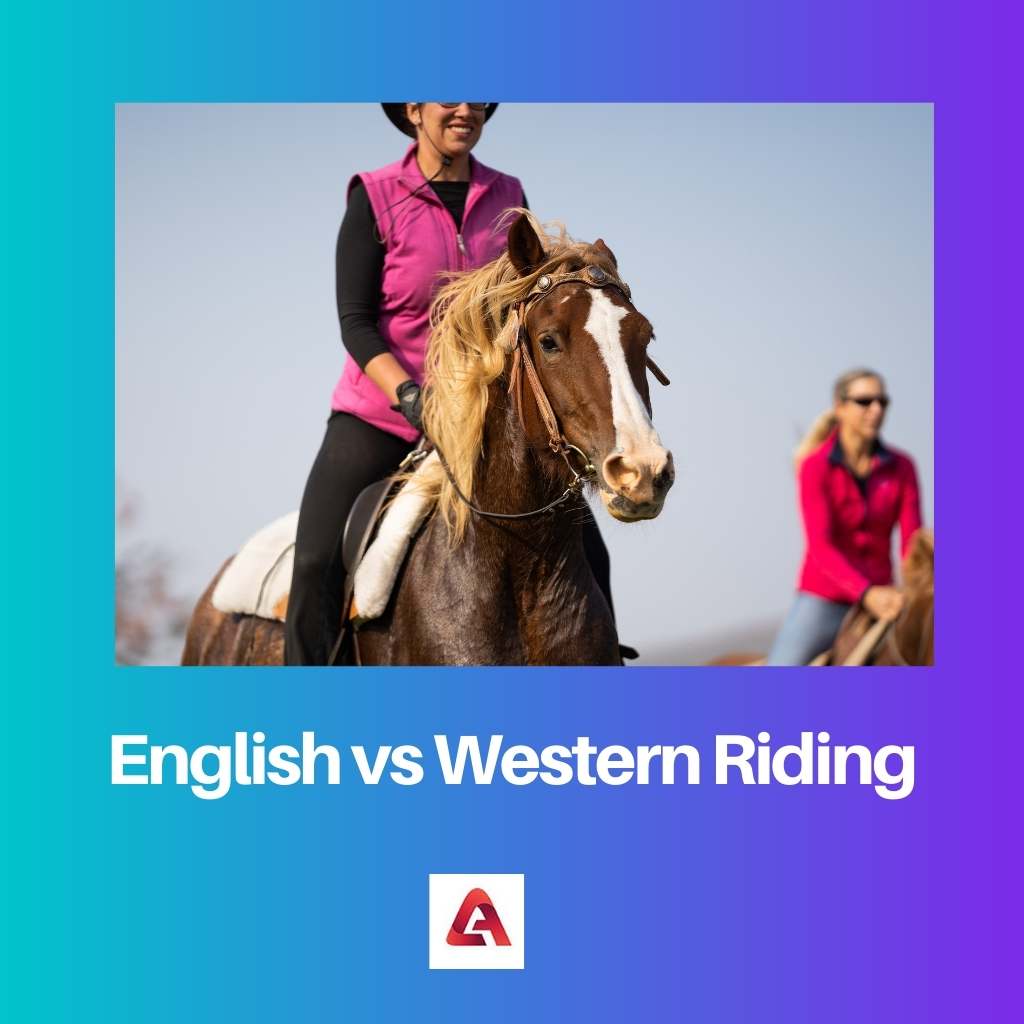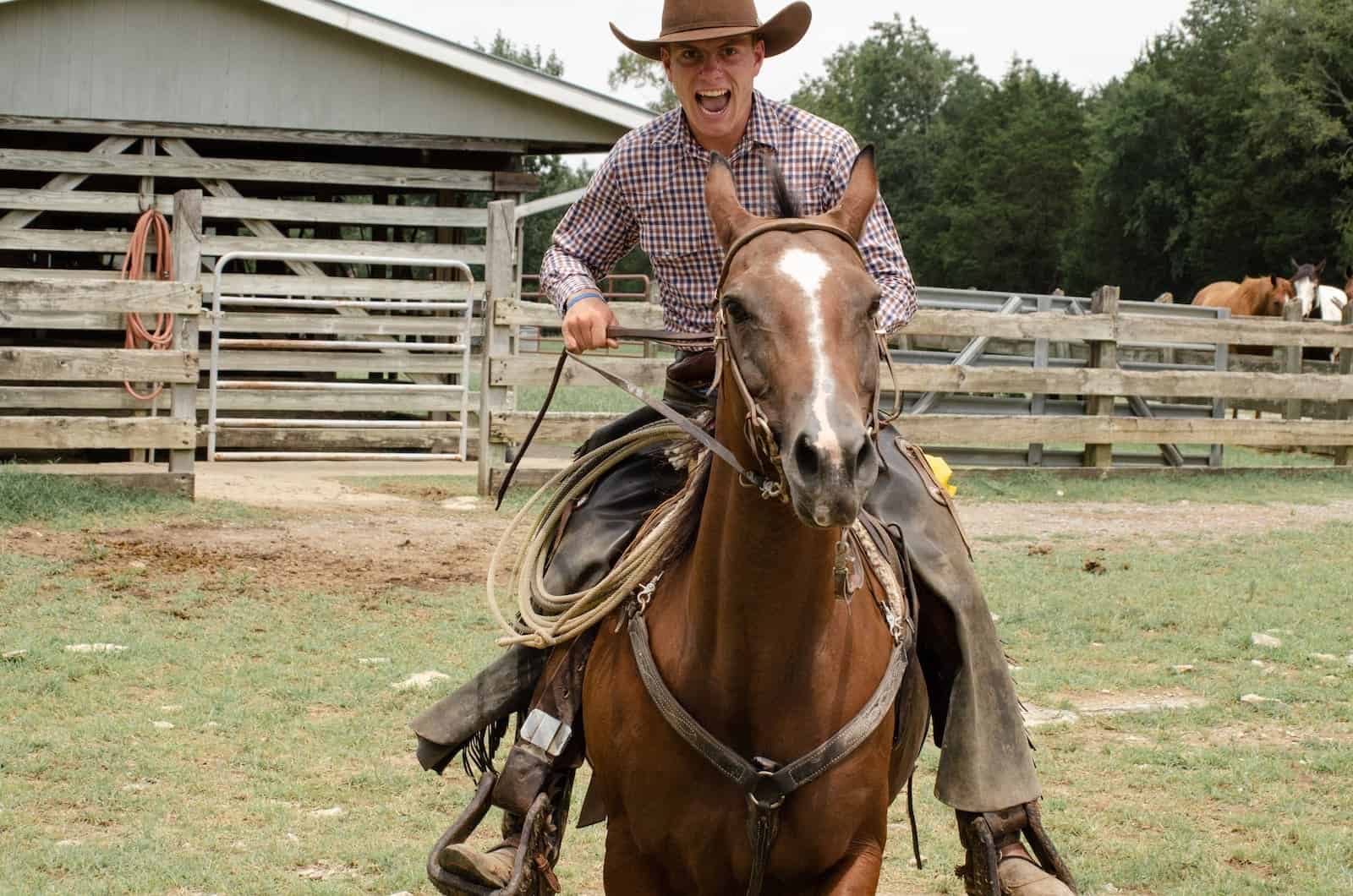Horse riding is a popular sport and hobby across the world in today’s time. However, it is essential to know the different styles and methods of riding before delving into the field.
English and Western riding are two different styles of riding that can be chosen according to the preference of the rider.
Key Takeaways
- English riding emphasizes balance and elegance, while Western riding focuses on working with livestock and long-distance travel.
- English riders use a flat, lightweight saddle with minimal padding, whereas Western riders use a larger, more padded saddle for comfort and stability.
- English riding disciplines include dressage and show jumping, while Western riding disciplines feature reining and barrel racing.
English vs Western Riding
English riding originated in Europe and is associated with sports such as dressage, show jumping, and eventing. Western riding originated in North America and is associated with ranching and rodeo events, involving a heavier saddle with a horn at the front and a larger, heavier bridle.

English riding is a discipline of horse riding that requires the rider to use both his hands to manage the horse.
Here, a flat English saddle is used on the horse, which does not have a deep curvature for comfort. Moreover, there is no cantle or saddle horn present on it.
Meanwhile, Western riding is another discipline of horse riding that requires the rider to use only one hand to manage the horse. The other hand remains free and can be placed on the thigh.
In some cases, it is used to hold a lariat. The saddle, in the case of western riding, has a deep curvature that facilitates safety and comfort.
Comparison Table
| Parameters of Comparison | English Riding | Western Riding |
|---|---|---|
| Hands | The rider uses both hands. | The rider uses only one hand. |
| Saddle | The saddle is small, light, and does not have a curvature. | The saddle is relatively larger, heavier, and features a deep curvature. |
| Reign | The horses have reigns in their mouth. | The horses have reigns on their neck. |
| Accessories | It does not use a cantle and saddle horn. | It uses a cantle and saddle horn. |
| Rider’s Attire | It features a hat, cap, or helmet along with a jacket, leggings, and boots. | It features jeans, boots, a cowboy hat, a long-sleeved shirt, and chaps. |
What is English Riding?
English riding is a specific disciple of horse riding that has specific characteristics. It is known to have originated in 700,000 BC Suffolk.
Later, it extensively evolved throughout 500,000 BC in West Sussex. Ancient British armies were known to use this discipline of horse riding.
In this style of riding, the rider is supposed to use both hands to control the horse. The reigns, using which this is done, are placed in the horse’s mouth.
Due to this, the rider needs to tug harder on the reign to give instructions, as compared to other riding styles.
Another characteristic of English riding is that the saddle is a flat English one. This means that it does not have a deep curvature for safety and comfort. It does not feature a cantle or a saddle horn as well.
This is because English riding was meant to be used in tough and rugged conditions. In such a situation, having a large and heavy saddle is not practical.
The attire of English riders is also predetermined. This includes a jacket, leggings, and boots. The rider is also required to wear a hat, cap, or helmet. This attire is even used today in British armies.

What is Western Riding?
Western riding is another style of horse riding that is very different from English riding. Firstly, this style is known to be brought into America by Spanish conquistadors.
It was then used extensively by cowboys for work.
The riding style also uses different equipment and accessories as compared to English riding. Firstly, the rider is supposed to hold the reign with only one hand.
Meanwhile, the other hand is free. It can be placed on the thigh of the rider or can be swung in the air. The choice is of the rider.
The saddle, in the case of western riding, has a deep curvature that facilitates safety and comfort. It features a cantle and saddle horn as well.
This is due to the reason that cowboys worked for long hours during the day. They also had to travel a lot and sometimes even use lassos while riding.
Therefore, the comfort and security of the rider were taken into consideration.
The attire of the Western riders is different from English riders as well. It features denim jeans, a jacket, a long-sleeved work shirt, a cowboy hat, and boots.
A pair of leggings were also worn beneath the denim so that riding would not cause any rashes.

Main Differences Between English and Western Riding
- English riding requires the rider to use both hands, whereas in Western riding, the rider uses only one hand.
- In English riding, the saddle is small, light, and does not have a curvature, whereas, in Western riding, the saddle is relatively larger, heavier, and features a deep curvature.
- In English riding, the horses have reigned in their mouths, whereas in Western riding, the horses have reigned on their necks.
- English riding has no cantle or saddle horn, whereas Western riding features a cantle and saddle horn.
- The attire of English riders is a hat, cap, or helmet, along with a jacket, leggings, and boots, whereas the attire of Western riders is jeans, boots, a cowboy hat, a long-sleeved shirt, and chaps.

- https://journals.co.za/doi/abs/10.10520/EJC14074
- https://www.sciencedirect.com/science/article/pii/S1558787821000034

I’d be curious to know if there are any other styles of horse riding that differ as significantly as English and Western riding. The history and origins of equestrian disciplines are so fascinating!
I think this is an excellent question! It would be interesting to do a comparative study of different styles of horse riding.
I’m very intrigued by the idea of comparing other horse riding styles to see how they differ and reflect their cultural backgrounds.
The article provided a thought-provoking examination of the historical, cultural, and functional disparities between English and Western riding. It’s intriguing to delve into the diverse roots of equestrian disciplines.
The depth of historical and cultural influences on equestrian disciplines sheds light on the diverse practices and traditions embedded in horse riding.
Absolutely! Understanding the roots of equestrian traditions enriches our appreciation of the equestrian world.
The distinctive characteristics and evolution of English and Western riding are truly captivating. It’s amazing to see how the two styles are rooted in historical and cultural contexts.
Absolutely! Exploring the historical and cultural aspects of equestrian traditions provides valuable insights into the significance of horse riding across different societies.
Yes, the depth of history and tradition within each riding style reflects the diverse equestrian heritage we have today.
This is so fascinating! I never knew there were so many differences between the two styles of horse riding. I find it very interesting that the riding styles have such different origins. I’d love to learn more about this subject.
Absolutely! The distinct history and working conditions of each riding style definitely shaped the unique features and equipment used in each style.
Yes, it’s truly amazing how distinct the two styles are! I believe the two styles require such different skills and mindsets.
I found it intriguing to learn about the contrasting aspects of English and Western riding. The detailed comparison and historical insight were enlightening!
Absolutely! The depth of differences and historical significance in equestrian disciplines adds an enriching layer to the equestrian world.
The rich historical background and the diverse features of English and Western riding make this subject truly captivating.
The intricate details and differences between English and Western riding are astounding. This article provided a comprehensive overview of each style’s characteristics and origins.